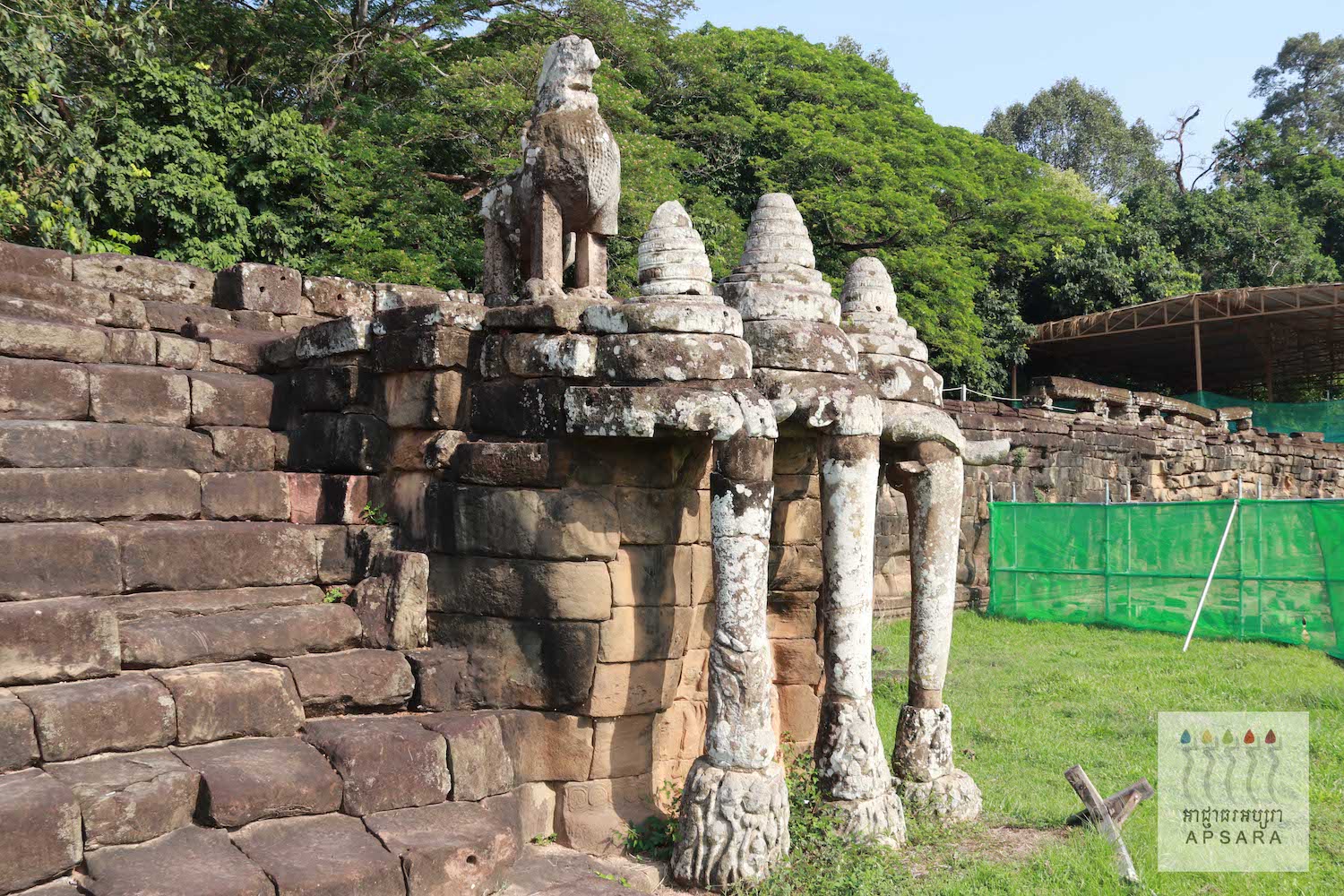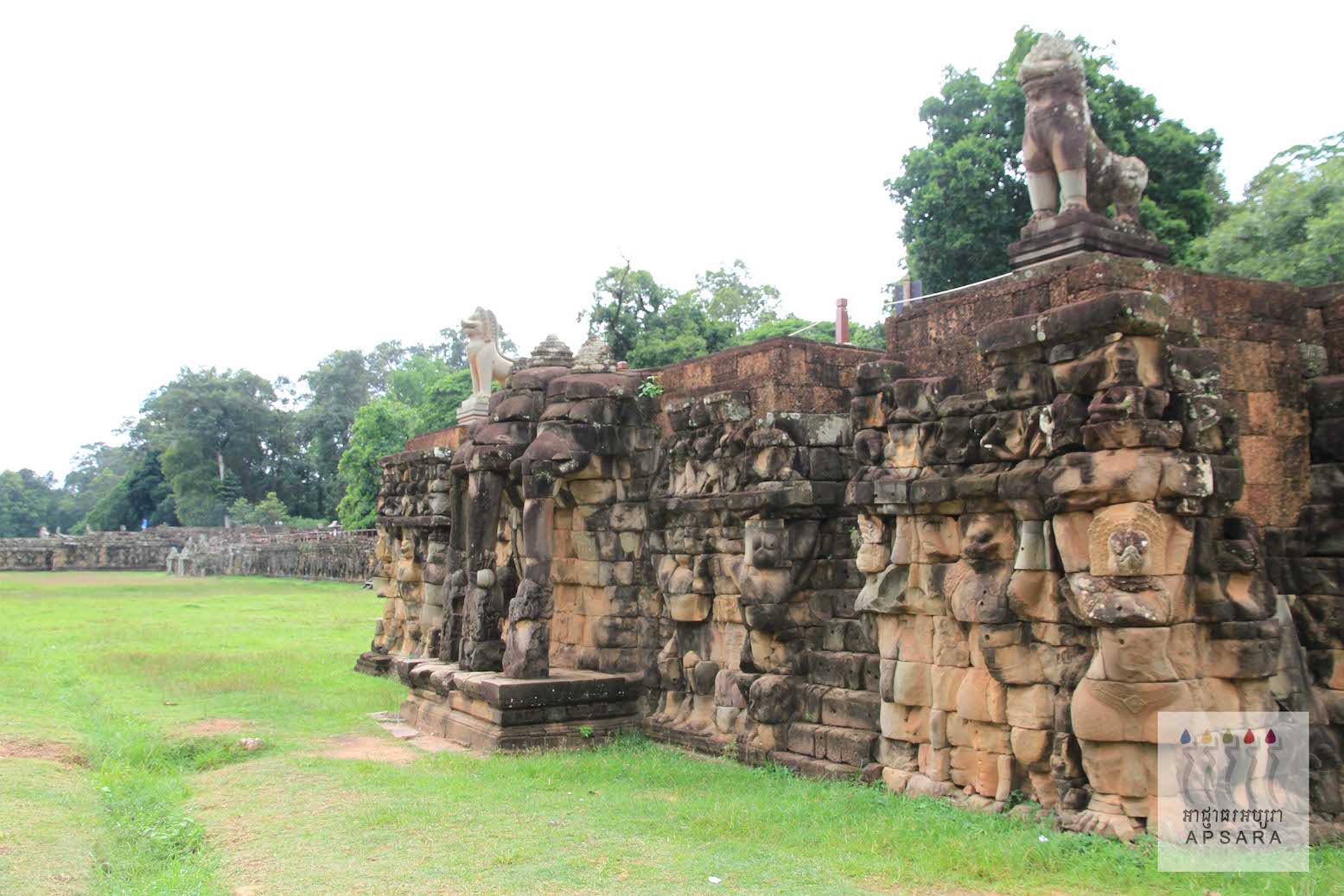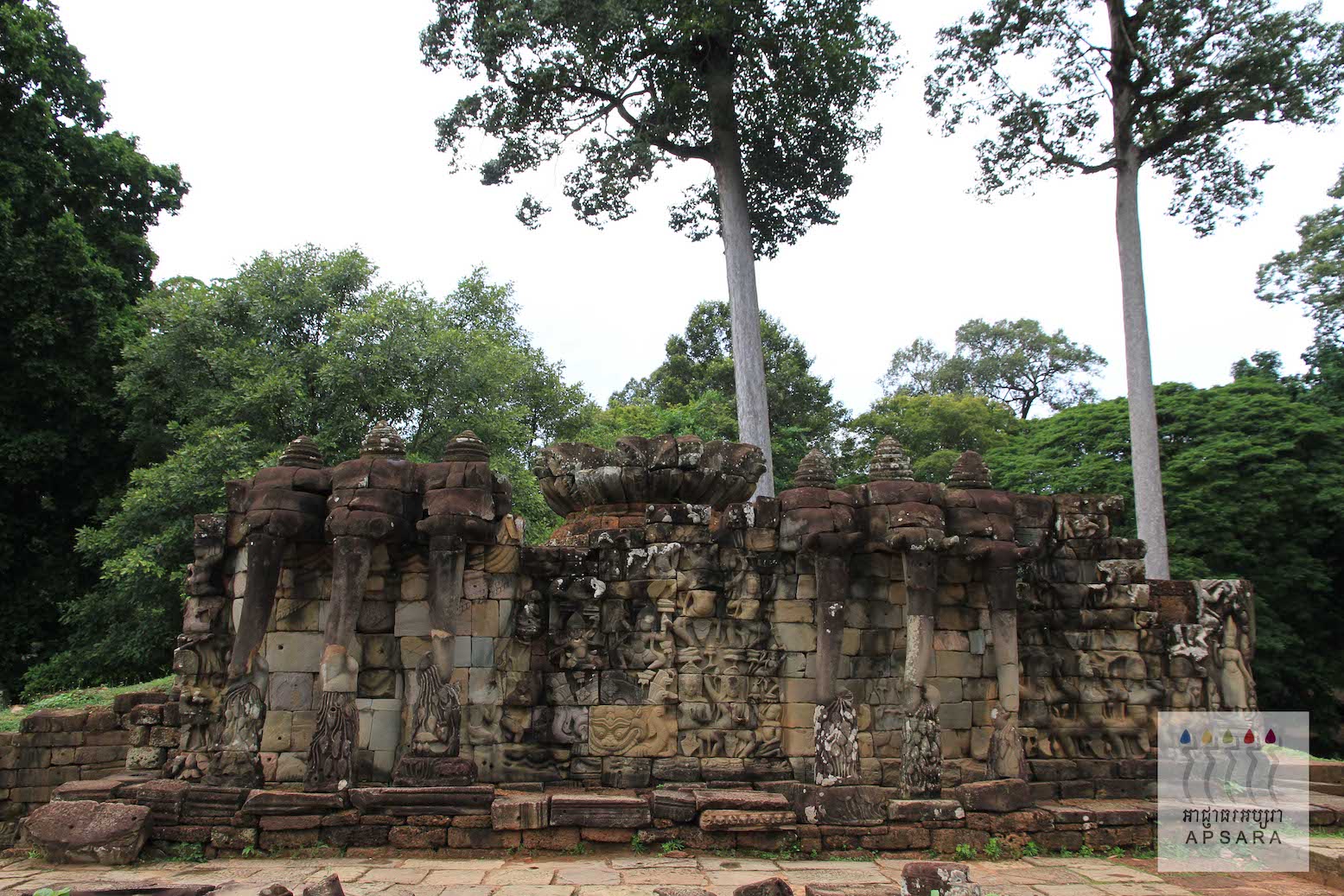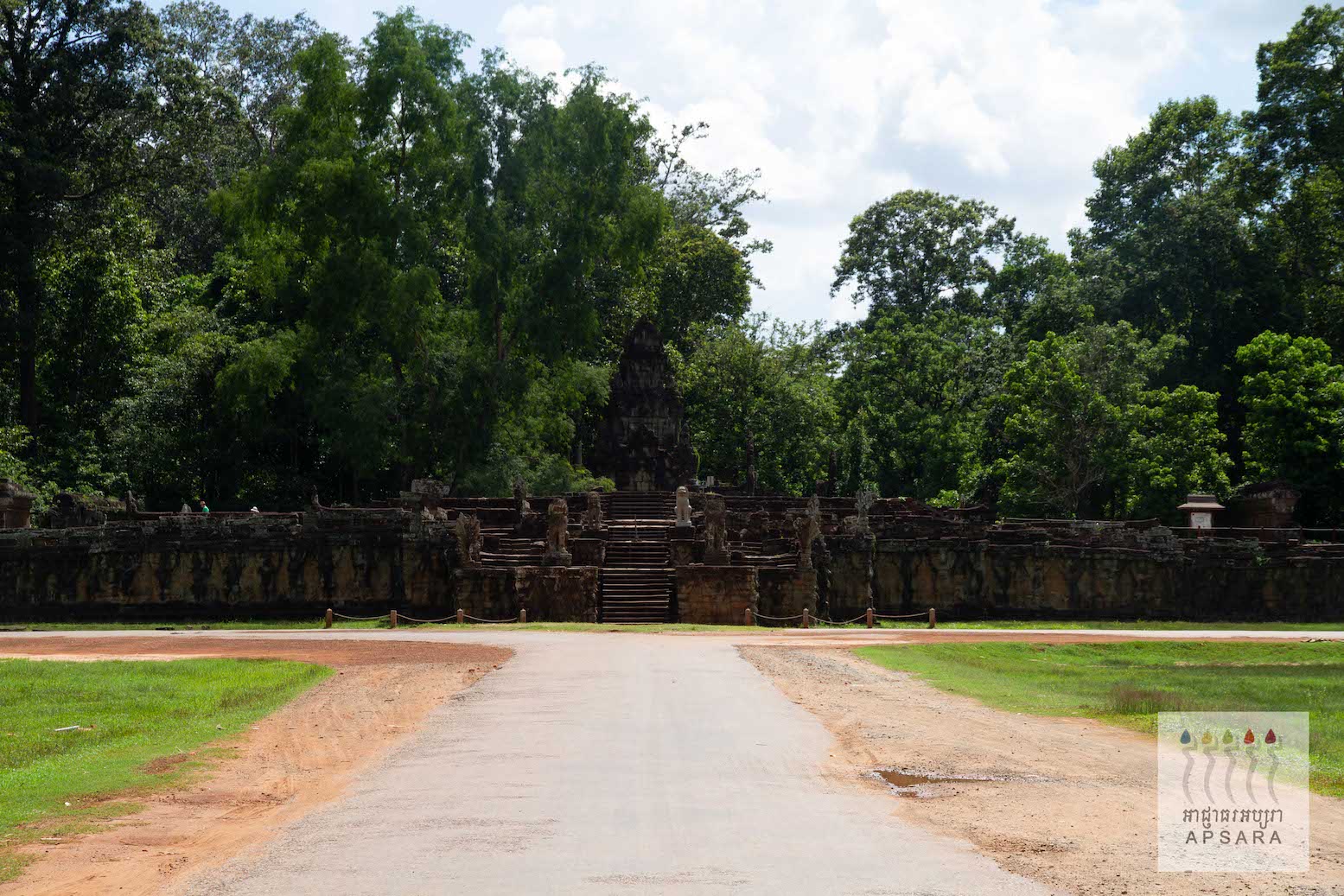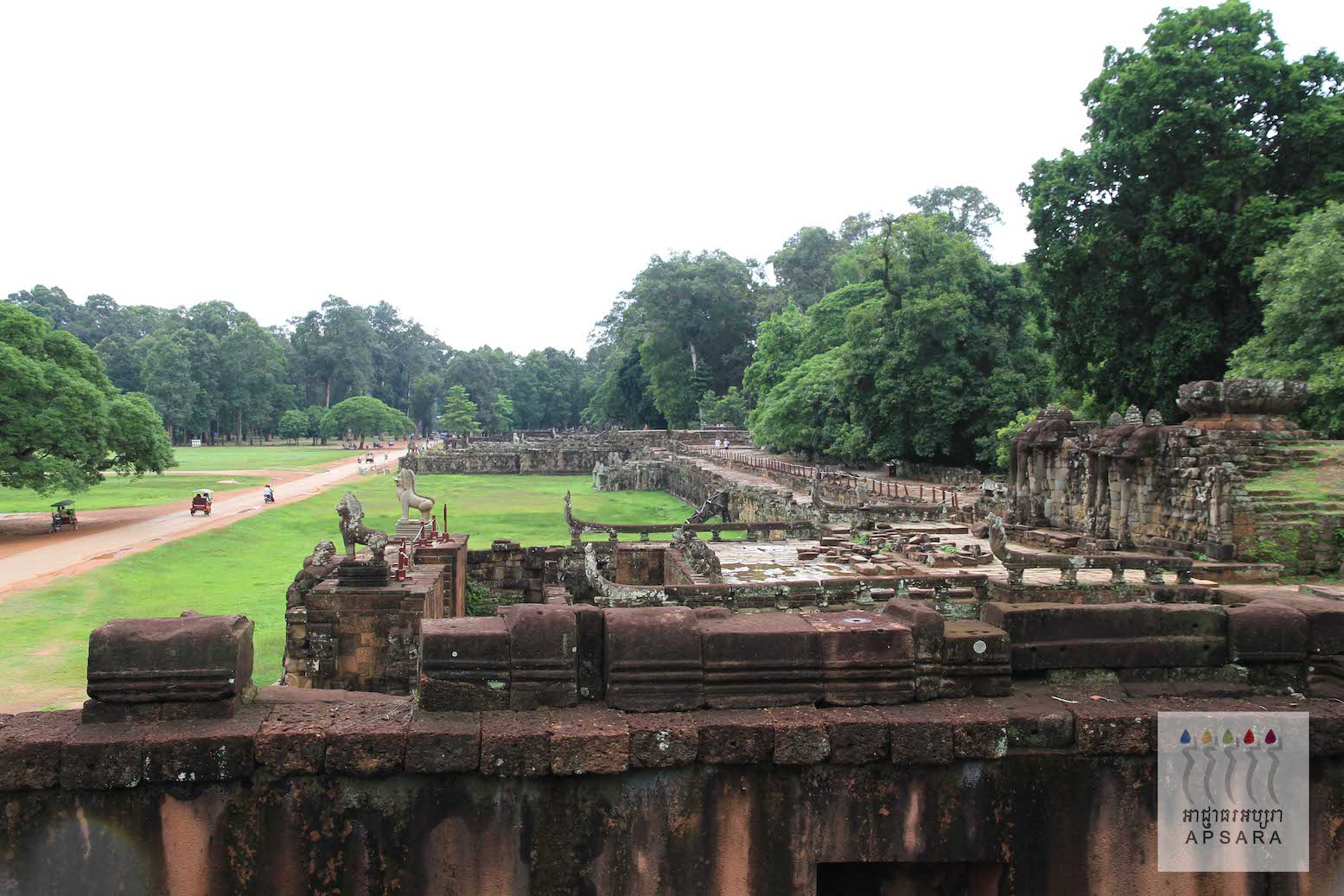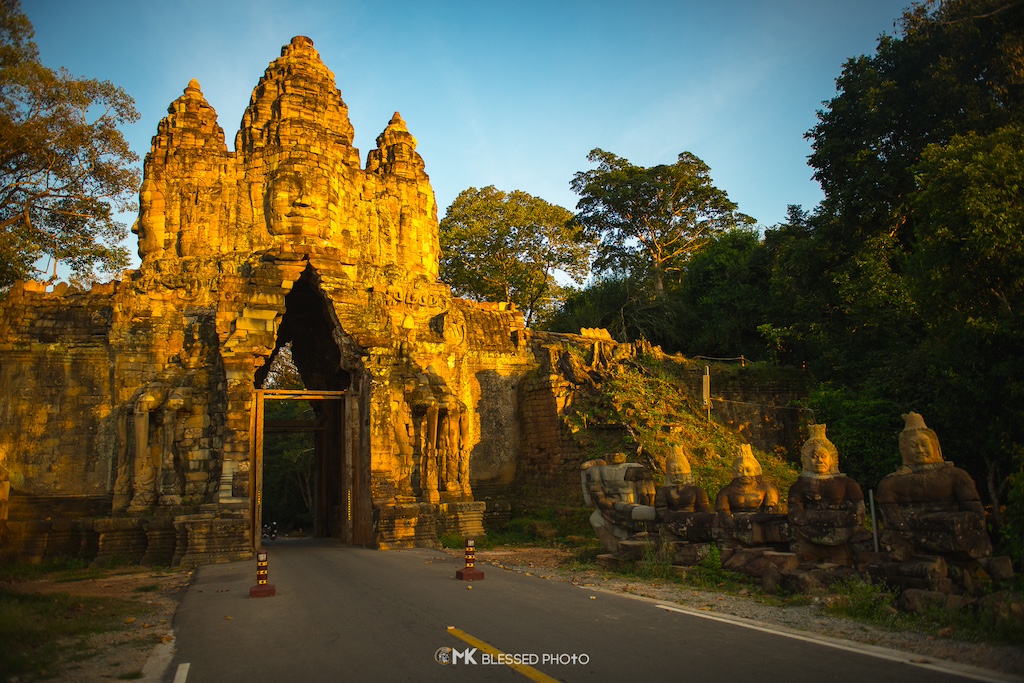Elephant Terrace: The Majestic Platform of Ancient Spectacles
Nestled in the heart of Angkor Thom, the Elephant Terrace is an impressive structure that served as a grandstand for public ceremonies and a base for the king’s audience hall. Built in the late 12th century during the reign of King Jayavarman VII, it extends over 300 meters and is adorned with intricate carvings and statues, showcasing the grandeur of the Khmer Empire.
This terrace gets its name from the carvings of elephants on its eastern face. These life-size sculptures are not just mere decorations; they symbolize strength and power and are a testament to the significance of elephants in Khmer culture.
Major Sight Spots at the Elephant Terrace:
The Carved Elephants: A row of three-dimensional elephants emerging from the terrace wall, appearing as if in a parade.
The Lion and Garuda Statues: Intricately carved statues that add to the terrace's majestic aura.
The Five Outworks: Smaller platforms extending from the main terrace, each uniquely decorated and once used for various royal ceremonies.
The Central Staircase: This leads to the top of the terrace and offers a panoramic view of the Royal Square.
The Face Towers: Near the terrace, these towers feature the iconic Bayon-style faces and add to the spiritual significance of the area.
Carvings of Warriors and Apsaras: Detailed bas-reliefs depicting warriors in battle and heavenly apsaras dancing, illustrating scenes from Hindu mythology.
The North Terrace: Often less crowded, it provides a different perspective and equally stunning carvings.
Visitors to the Elephant Terrace can marvel at the architectural prowess of the Khmer builders. The terrace was not only a symbol of royal grandeur but also a functional space for public gatherings, processions, and religious ceremonies. It offers a unique glimpse into the socio-cultural life of the ancient Khmer kingdom.
The Elephant Terrace remains an integral part of the Angkor experience. Its strategic location and historical significance make it a must-visit for anyone interested in the architectural and cultural heritage of Cambodia.


